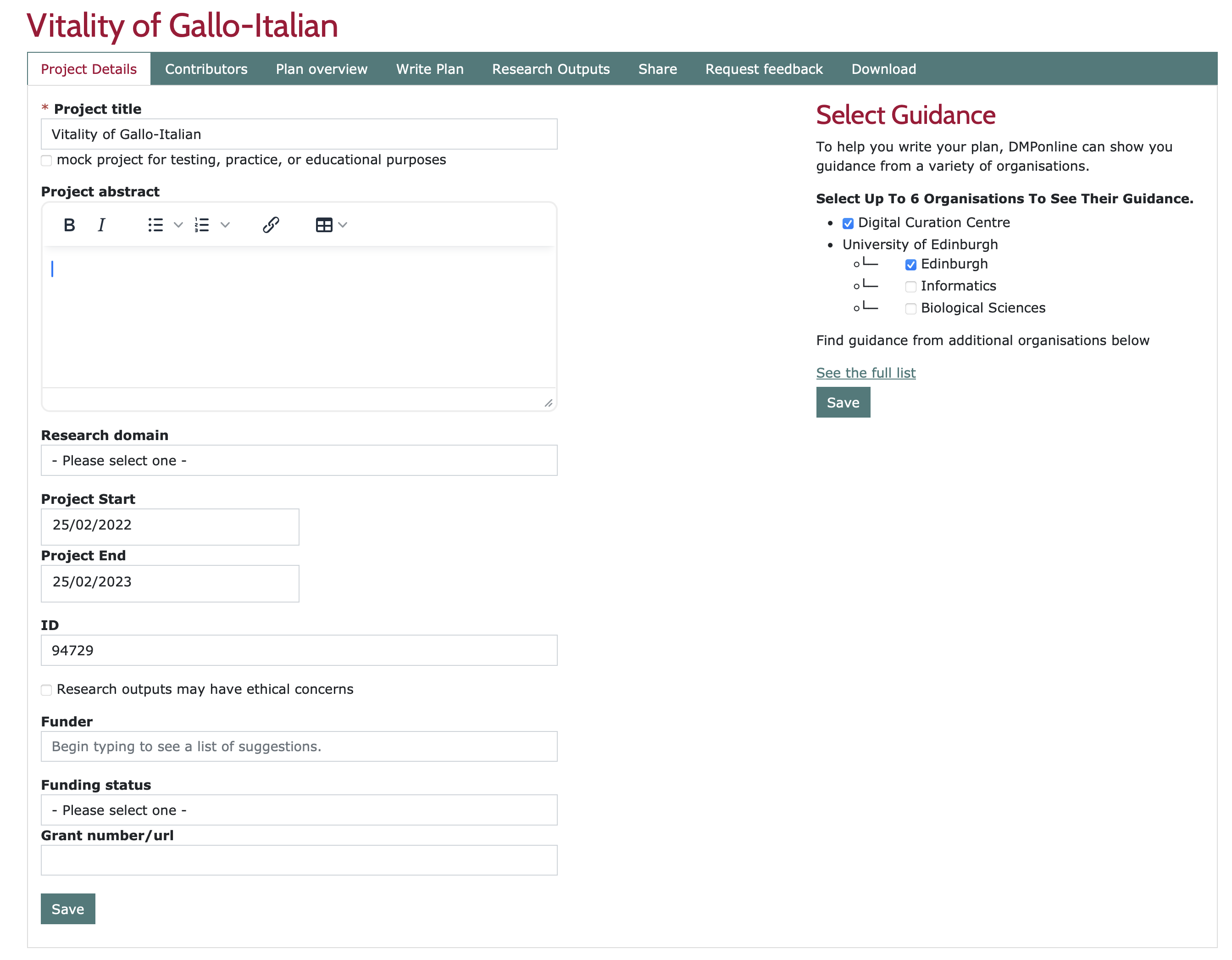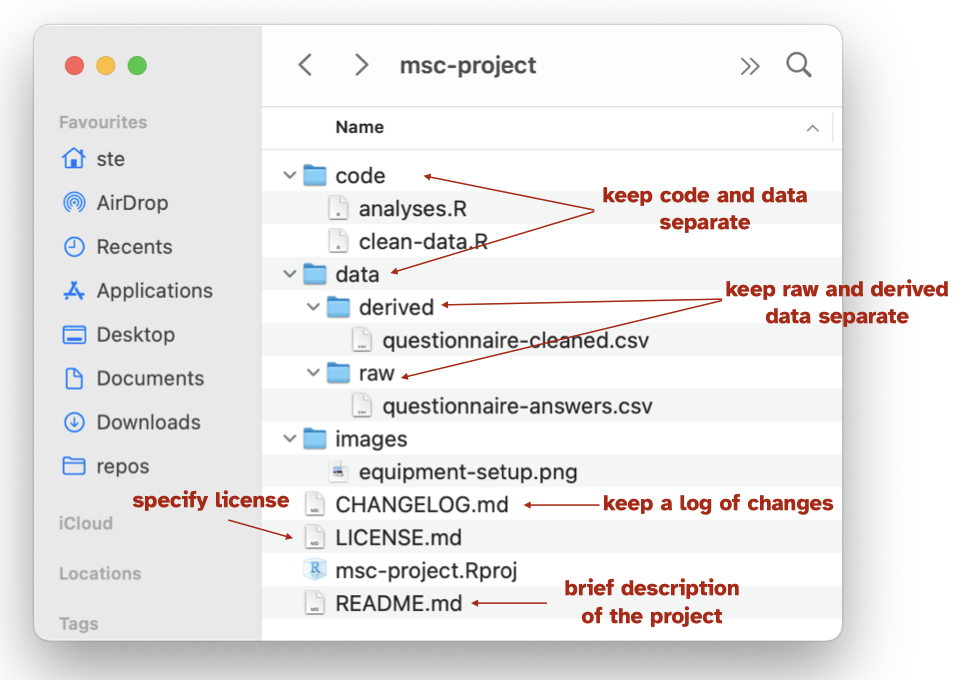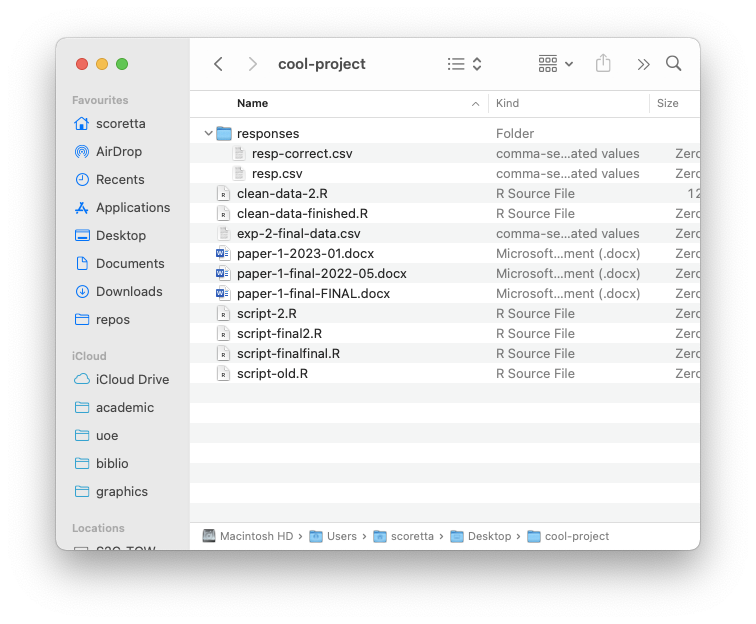Data Analysis for LEL - Week 3
File management
University of Edinburgh
Research project management

Data Management Plan (DMP)
A Data Management Plan (DMP) covers data types and volume, capture, storage, integrity, confidentiality, retention and destruction, sharing and deposit.

Research Compendium
A research compendium accompanies, enhances, or is a scientific publication providing data, code, and documentation for reproducing a scientific workflow.
A research compendium is a collection of all digital parts of a research project including data, code, texts (protocols, reports, questionnaires, meta data). The collection is created in such a way that reproducing all results is straightforward.
Organise files
Create one folder and make that the folder for your dissertation project.
In that folder, create folders for
data/and forscripts/(andplots/,dissertation/, etc).
In
data/have araw/andderived/folder:Raw data (data that, if lost, it is very unfortunate; for example, experiment data, data which was manually annotated, etc) should be saved in
data/raw/.Derived data (data that is derived with scripts) should be saved in
data/derived/.
Organise files: example

Back up
Make sure you have a backup system in place.
Save copies of the entire folder in an external hard drive.
Saving copies of the entire folder in an online storage service (iCloud Drive, One Drive, DropBox, Google Drive, …).
- But if you are working on that copy via syncing, make sure you have a second independent place you back up to, like a hard drive.
Using a versioning system like git.
Research projects are dynamic
Be prepared to change how files and folders are organised after you start.
Projects evolve over time and sometimes you need to clean things up.
Use a good system to mark versions in your files. Two simple systems:
- Use full DATE in the file name
dissertation-2022-11-21.dissertation-2023-03-01.
- Or use version number
- Inspired by Semantic versioning from programming but can be helpful with research files too!
dissertation-v1.0.dissertation-v1.1.dissertation-v2.0.
- Use full DATE in the file name
File naming don’ts

Licensing
A license gives someone official permission to reuse something while protecting the intellectual property of the original creator.
Use open licenses to ensure the data/code can be used by other researchers.
The Creative Commons licenses are now common in research.
Activity
Discuss in small groups.
How have you organised your files so far?
Something you would like to change?
Something you would like to keep?